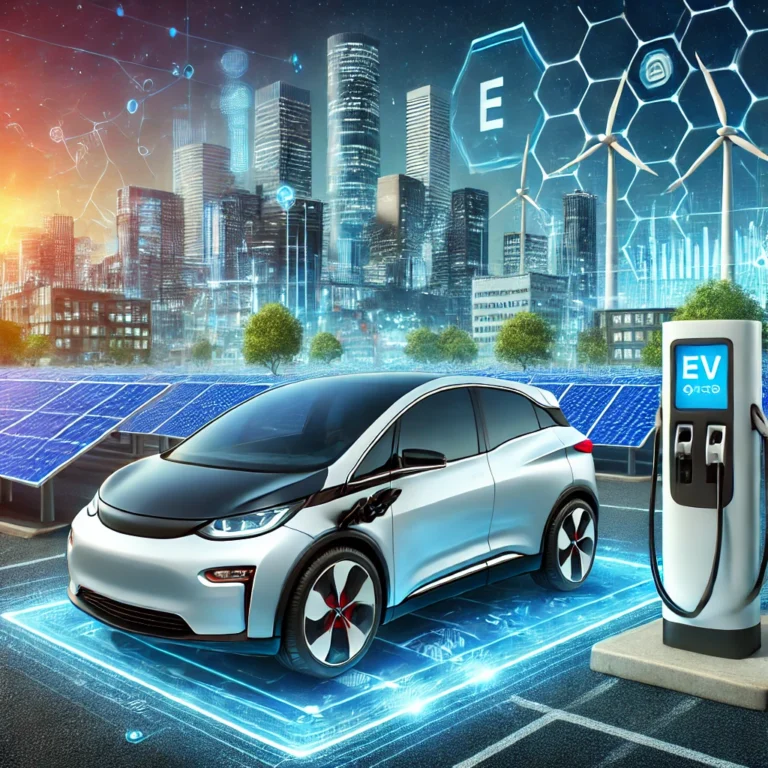BYD: The Chinese EV Giant Electrifying the Global Automotive Landscape
Introduction
BYD (Build Your Dreams), once a humble battery manufacturer in Shenzhen, has evolved into the world’s largest electric vehicle (EV) company, surpassing Tesla in global sales and redefining the automotive industry. With a relentless focus on innovation, vertical integration, and affordability, BYD is not just leading China’s EV revolution but also challenging established automakers worldwide. This article explores BYD’s meteoric rise, its technological breakthroughs, global ambitions, and the challenges it faces as it reshapes the future of transportation.
1. From Batteries to EVs: The Origins of a Powerhouse
Founded in 1995 by engineer Wang Chuanfu, BYD began as a manufacturer of nickel-cadmium batteries, leveraging China’s low-cost labor to undercut Japanese competitors. By the early 2000s, BYD dominated the global mobile phone battery market, supplying giants like Motorola and Nokia 2.
Wang’s visionary pivot to automobiles in 2003—marked by the acquisition of Xi’an Qinchuan Automobile—initially baffled investors. However, BYD’s first car, the gasoline-powered F3 (2005), became a hit in China due to its affordability. The company’s true breakthrough came in 2008 with the F3DM, China’s first mass-produced plug-in hybrid, and the e6 electric taxi, which showcased BYD’s commitment to sustainable mobility 25.
A turning point arrived in 2008 when Warren Buffett’s Berkshire Hathaway invested $230 million, validating BYD’s potential. Today, BYD operates as a vertically integrated conglomerate, producing EVs, batteries, solar panels, and even monorails, with over 968,900 employees globally 210.
2. Technological Innovations Driving Dominance
BYD’s success hinges on cutting-edge technology and cost efficiency. Key innovations include:
The Blade Battery (2020)
A lithium iron phosphate (LiFePO4) battery renowned for safety, energy density, and longevity. It passed rigorous nail penetration tests without catching fire and powers models like the Han sedan, offering up to 447 miles of range 510. The Blade Battery’s integration into BYD’s e-Platform 3.0—a modular architecture—enables faster charging (30–80% in 30 minutes) and enhanced structural safety 510.
Dual-Mode Hybrid Technology
BYD’s DM-i (fuel-efficient) and DM-p (performance) hybrid systems combine affordability with versatility. The DM-i platform achieves a thermal efficiency of 43.04%—surpassing Toyota’s hybrids—and enables models like the Qin Plus DM-i to travel 1,245 km on a single charge and tank 10.
God’s Eye ADAS and Smart Driving
In 2025, BYD introduced its “God’s Eye” advanced driver-assistance system (ADAS), rivaling Tesla’s Full Self-Driving. Offered standard on most models, including the $10,000 Seagull, it underscores BYD’s democratization of smart features 89.
Vertical Integration
BYD produces 70–80% of components in-house, including semiconductors and motors, slashing costs and accelerating production. This strategy enables aggressive pricing, such as the $10,000 Seagull EV, which disrupts markets globally 89.
3. Global Expansion: Conquering New Markets
BYD’s domestic dominance—32% of China’s NEV market in 2024—is now matched by ambitious overseas growth. Key strategies include:
Localized Production to Bypass Tariffs
To counter EU tariffs (up to 45%) and U.S. trade barriers (100% tariffs), BYD is building factories in Hungary, Turkey, Brazil, and Thailand. These facilities will assemble vehicles using Chinese-made components, maintaining cost advantages 48.
Europe: A Battleground for EVs and PHEVs
In Europe, BYD sold 37,000 vehicles in Q1 2025, an 8,500-unit YoY increase. While its Seal and Atto 3 EVs compete with Tesla and Hyundai, BYD is also launching PHEVs like the Seal DM-i to cater to hesitant buyers. The $20,000 Dolphin Mini (Seagull) will debut in Europe by 2026, targeting budget-conscious drivers 137.
Emerging Markets
BYD sees “great opportunities” in Southeast Asia and Latin America, where Chinese brands are welcomed. In Thailand, BYD outsold Honda and Toyota in 2024, while Brazil is set to host its largest overseas factory 46.
4. Financial and Market Performance
BYD’s financials reflect its aggressive growth:
- 2024 Revenue: 108.25billion,surpassingTesla’s108.25billion,surpassingTesla’s97.7 billion 78.
- Q1 2025 Profit: 9.2 billion yuan ($1.26 billion), doubling YoY due to price wars and smart feature adoption 9.
- 2025 Targets: 5.5 million vehicle sales (30% YoY growth) and 800,000 overseas deliveries (double 2024’s 417,204) 47.
Despite Tesla’s struggles (1.1% delivery decline in 2024), BYD faces challenges. Its heavy reliance on China (90% of sales) and geopolitical tensions—like delayed Mexico factory approvals over tech-transfer fears—could hinder global ambitions 68.
5. Challenges and Controversies
Labor Practices
In Brazil, BYD faced allegations of “slavery-like conditions” at a construction site, which it denied. Such incidents risk reputational damage as scrutiny of Chinese firms intensifies 8.
Price Wars and Overcapacity
China’s EV market is overcrowded, with over 100 brands. BYD’s price cuts—spurred by the God’s Eye ADAS rollout—have pressured rivals like Geely and Toyota but squeezed margins 9.
Regulatory Hurdles
The EU’s anti-subsidy probe and U.S. tariffs complicate BYD’s expansion. However, CEO Wang Chuanfu remains confident, stating BYD’s per-vehicle profitability could eventually exceed Toyota’s 48.
6. The Road Ahead: Sustainability and Vision
BYD’s vision extends beyond cars. Its “Cool the Earth by 1°C” initiative emphasizes electrifying public transport, with electric buses operating in 400+ cities. The company also invests in renewable energy storage and smart city infrastructure 10.
Upcoming models like the Yangwang U7 luxury sedan (0–62 mph in 2.9 seconds) and Denza Z9 GT (a Porsche Taycan rival) aim to elevate BYD’s premium appeal. Meanwhile, its 2025 “Blade 2.0” battery promises 250 miles of range in five minutes, outpacing Tesla’s Superchargers 18.
Conclusion
BYD’s journey from a battery startup to a global EV titan epitomizes China’s industrial ascendancy. By combining technological prowess, cost efficiency, and strategic localization, BYD is not just challenging Tesla but reshaping how the world views Chinese innovation. However, geopolitical tensions, market saturation, and ethical scrutiny remain formidable hurdles. As Wang Chuanfu declared, “The era of Chinese cars has arrived”—and BYD is leading the charge.






